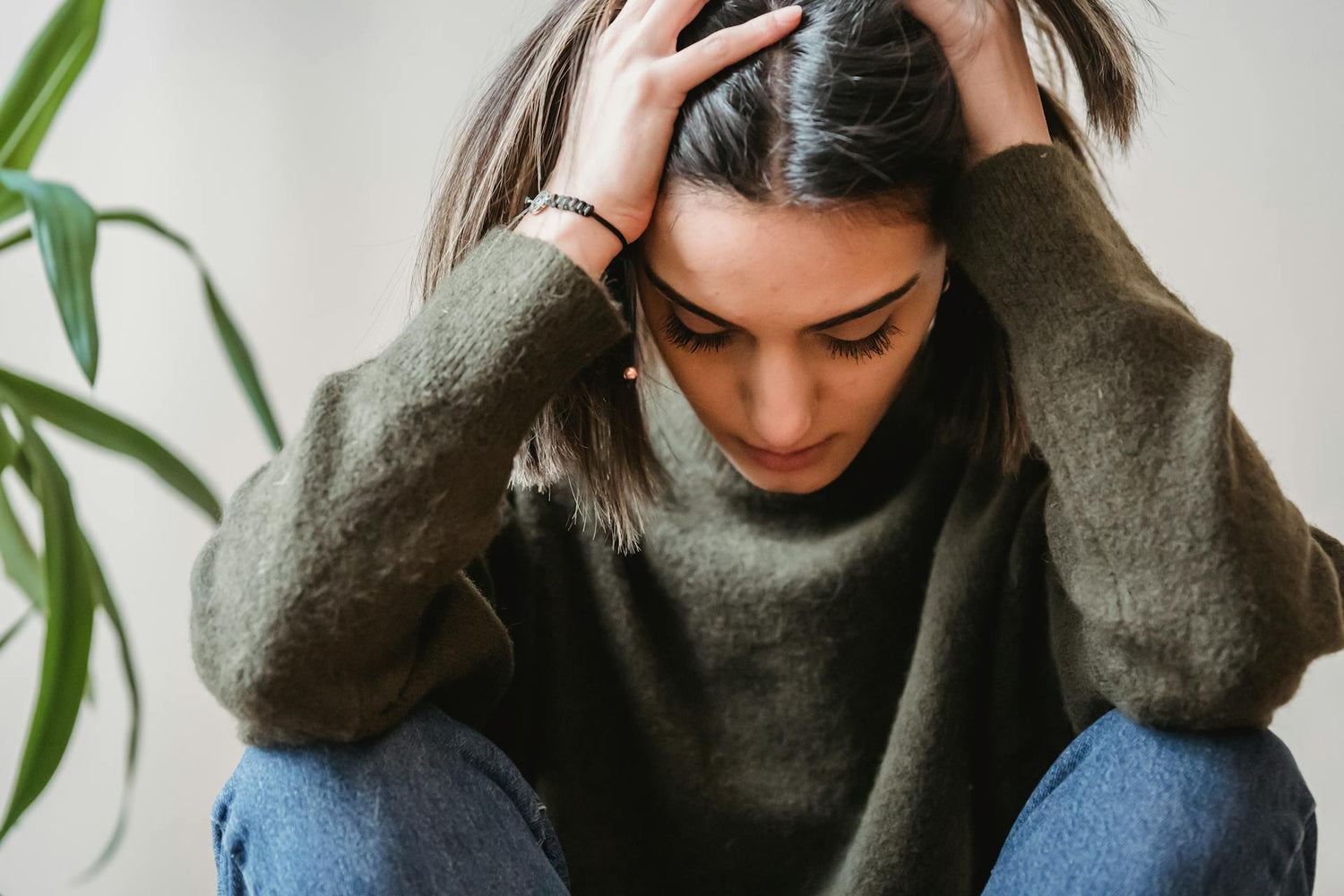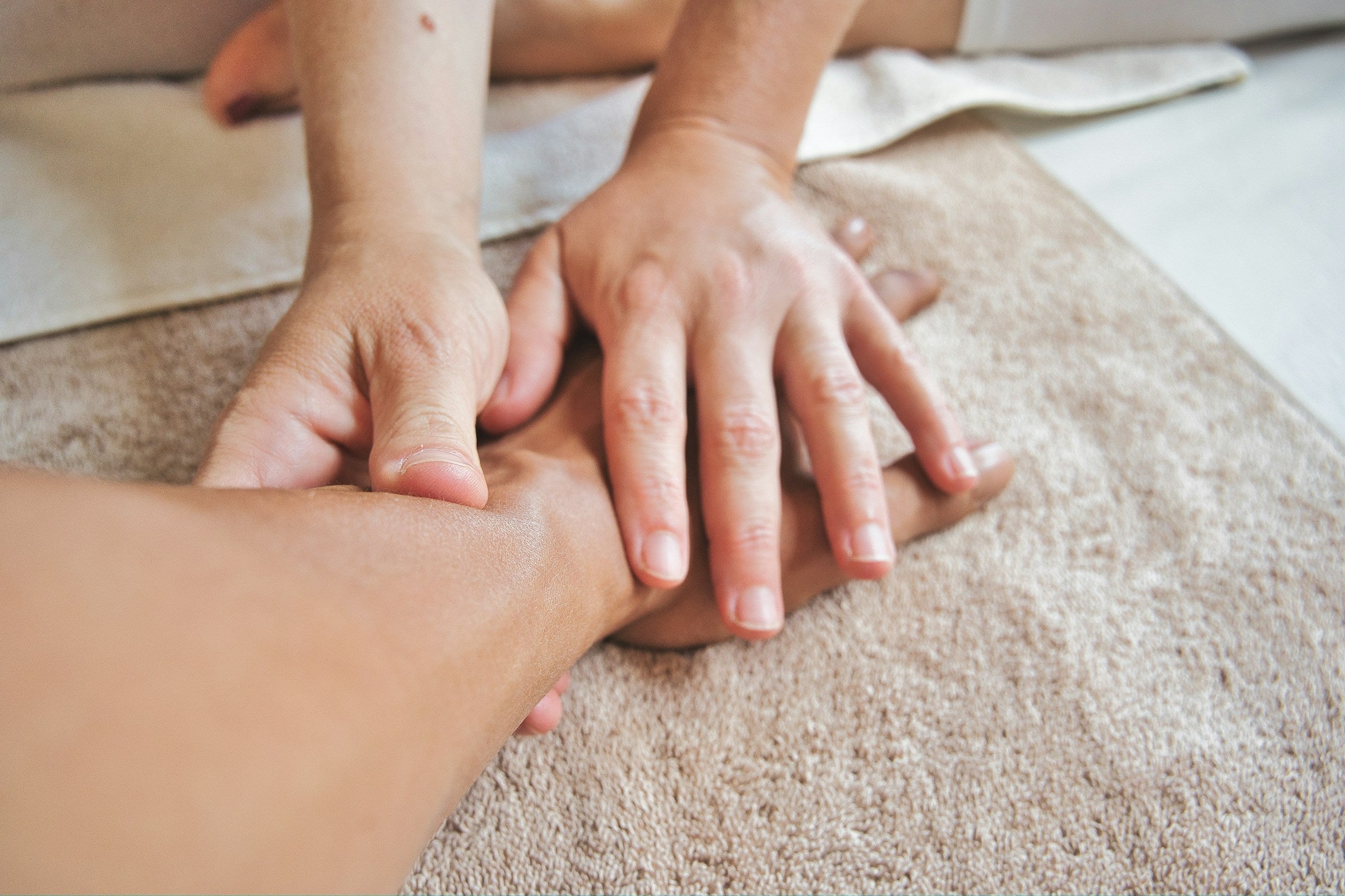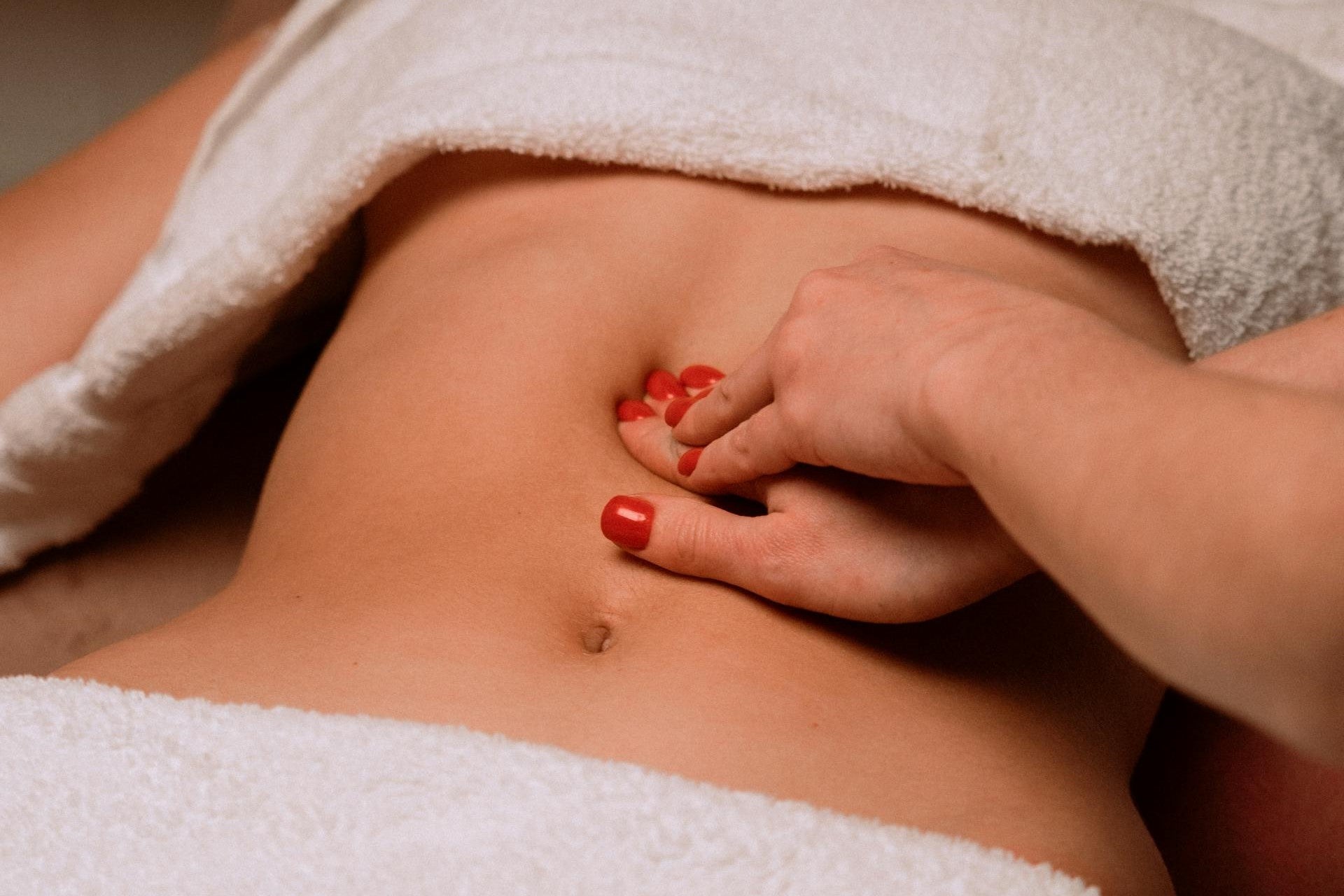Migraines are a painful condition affecting hundreds of millions of people around the world — and the way they present can be different for everyone. This means that predicting them, preventing them, and finding relief when they strike can be a long journey.
If you live with migraines, you might wonder whether massage could help you prevent or calm your symptoms. After all, it offers plenty of benefits for muscles and overall well-being. But can it really make a difference in migraine pain or frequency?
Keep reading to learn about massage therapy for migraine, including the potential benefits, research, and tips to know before getting started.
What Is a Migraine?
People who have never had migraines might think of them as just a headache, but the truth is that they are much more severe than that. Migraines are a neurological condition that may involve the brain, spinal cord, and nerves. And because they are so complex, their cause can be different for different people.
Aside from head pain, symptoms may include nausea, vomiting, light sensitivity, and aura — or a group of sensory symptoms that happen before the pain itself. Migraines also typically occur in four phases, which can leave a person feeling disabled, distressed, and exhausted for several days.
Many factors can trigger a migraine attack, including:
- Fluctuations in hormones
- Changes in brain chemistry
- Poor quality sleep
- Certain foods or drinks
Managing Migraines
Since migraines are so complex, each person’s way of managing them might look different. With that said, it’s best to work with a neurologist to identify the root cause of your migraines — as well as find treatments to help you prevent and relieve them. Your neurologist might recommend a mix of:
Prescription Treatments
Prescriptions for migraines are meant to help you prevent or alleviate symptoms. These might include:
- Over-the-counter (OTC) pain meds, triptans, and other prescription-strength options to stop migraine attacks when they happen
- Prescriptions such as blood pressure medication, anti-seizure drugs, Botox injections, and others to help prevent migraines before they occur
Home Remedies
Depending on the nature of your migraines, certain home tools could help you ease your symptoms when they show up. For example, many people with migraines will take a hot or cold shower, use an ice pack, or even sip a small amount of caffeine to help curb their pain.
Beyond that, one of the most common ways to soothe a migraine is to simply lie down in a dark, quiet room. Since bright lights and loud sounds are well-known migraine triggers, many find that reducing stress and stimulation can bring some relief.
When To See a Doctor for Migraine Pain
Even though migraines are common, it’s important to know that you don’t need to “white knuckle” your way through them when they happen. Be sure to visit your doctor if your pain is worsening or becoming more frequent over time. In addition, it’s best to make an appointment if your migraines:
- Aren’t improving despite using OTC pain relievers
- Are getting in the way of your work, relationships, or daily tasks
- Are causing you a lot of discomfort or distress, and you want to find better ways to manage your pain and live comfortably
The Importance of Stress and Relaxation in Migraine Management
As a neurological disorder, there are various parts of managing migraines; and for many people, stress can be a big factor. Over time, too much stress can affect your body’s hormones, brain health, and cardiovascular system, all of which may play a role in your migraine pain or frequency.
In a 2013 review, researchers noted that stress has been linked to migraines becoming more frequent over time. And for some people, stress can also play a role in hyperalgesia (or heightened pain sensitivity).
Of course, relieving your stress likely won’t be the be-all-end-all of your migraines. But finding ways to keep it under control — whether that’s through diet, exercise, massage, or another tool — could make a difference in your comfort and quality of life.
How Can Massage Help Migraines?
Both directly and indirectly, massage may offer some calming benefits for many people who get migraines. One main way it can help is by activating the body’s relaxation response, which combats one of the more common migraine triggers: stress.
On top of that, it’s able to support healthy rest, which can be another major benefit for those whose migraines are triggered by lack of sleep. Plus, a good massage can break up trigger points in the neck, shoulders, and upper back, all of which may be involved in migraine episodes.
Overall, these benefits can make it a helpful natural self-care option for those with migraines — whether it’s used during an attack or as a preventative measure to manage daily stress and tension.
Research on Massage Therapy and Migraines
Over the past few decades, there have been many small studies on massage for headaches and migraines. And while the results have been promising so far, more large studies are needed to understand exactly how this natural therapy might aid in migraine relief.
For example, researchers are still working out the specifics around who might benefit most from massage for migraines — as well as the kind of benefits it can provide, and the types of massage that work best.
That being said, many studies have had positive results so far. These include:
Massage for Women With Migraines
One 2023 trial looked at whether connective tissue massage (CTM) could make a difference for women living with migraines. They divided the participants into two groups:
- Group one received migraine education
- Group two received migraine education and massage 12 times over four weeks
At the end of the four weeks, those in the massage group reported greater improvements in pain levels, medication usage, and other symptoms of migraines (except for vomiting).
Manual Therapies and Migraine
For some people, manual therapies — like physical therapy, chiropractic, relaxation, and massage — may help soothe or even prevent migraines. In a 2011 review of studies, researchers looked at how these types of therapies fared against medication for those with migraines.
Surprisingly, they found that manual therapies including massage may be equally as effective as certain medications for preventing migraines. However, the trials in the review were limited, and the authors noted that more high-quality studies are needed to confirm the benefits.
Trigger Points and Tension-Type Headaches
Trigger points (or knots) in the upper body can be major players in headaches. And for people with migraines, upper body tension can sometimes be a warning sign of an attack. Trigger points can also “refer” (or send) pain into places aside from where they’re located. For example, a knot in your upper back could cause neck pain, or a knot in your shoulder might be the culprit behind your jaw pain.
This relationship is why, in a six-week-long 2016 study, researchers looked at whether a type of massage called trigger point therapy could benefit people with recurring tension headaches.
Interestingly, they found that the massage group reported greater perceived change by the end of the study compared to the control group. And although this study was not on migraine pain specifically, it does point to some positive potential benefits of massage for those with headache-related symptoms.
What Is the Best Type of Massage for Migraines?

With all the different types of massage out there, you might wonder, “What’s the best option for migraines?”
In a nutshell, there’s no “best” type for everyone. Instead, it will depend on your preferences, health goals, and the areas you want to focus on during your session. That said, there are a few extra soothing options that might be worth asking your massage therapist about. These include:
Trigger Point Therapy
Trigger point therapy focuses on working out hyperirritable bands of muscle tissue, which can play a role in some types of migraines. In a session, your therapist will palpate along your muscles to find knots, and then apply a few seconds of sustained pressure to help them release.
This can be a great option when you have active trigger points — or knots that feel painful even when they’re not being touched. But this type of therapy can also help you break up hidden trigger points that you might not even be aware of, which could be causing pain in other areas.
Craniosacral Therapy
Craniosacral therapy involves gentle massage around the skull, neck, and spine. In a craniosacral massage session, you’ll get to stay fully clothed, and the practitioner will only focus on areas near the head and spinal column.
This type of head massage isn’t just relaxing; it may also offer some soothing benefits for those with migraines. In fact, a small 2022 randomized controlled trial found that this type of massage led to:
- Fewer migraine episodes
- Pain relief
- Higher self-reported perception of positive changes
Swedish Massage Therapy
If you’ve never tried massage before, Swedish massage can be a great option to start with. As a beginner, its light-pressure strokes can help you get used to different massage techniques. Plus, it can bring benefits like easing pain, boosting circulation, and promoting healthy sleep.
It’s also one of the best options for stress relief, since the pressure is gentle and rhythmic. Like other types of massage, it may also reduce muscle tension that could be adding to headache pain or frequency.
Cold Stone Therapy
Cold stone therapy isn’t as common as hot stone therapy, but it can be helpful for some people with headaches and migraines.
In a session, your therapist will use cold stones to help normalize blood flow and ease pounding and pain due to headaches. If you’re someone who enjoys using cold or ice packs when you have a migraine, you might find the cooling sensations from the stones especially soothing.
Trying Home Massage Tools
If you’re looking to get proactive about reducing the mental and physical effects of stress, it can be worth picking up a home massage tool. Having one not only makes it easier to get daily massage for migraines, but it also means not having to tire out your hands (or ask a partner) when you need relief.
Some of the best options include:
Myofascial Release Tools
Self-myofascial release (SMR) tools involve a type of massage that uses slow, moderate pressure to break up trigger points in your muscles and connective tissue. A bonus is that they are typically affordable and easy to use — including tools like massage balls, foam rollers, and more.
These tools are great for easing side, upper back, and trapezius tension, as well as muscle tightness in the lower body. Smaller foam rollers can also help roll out tightness and trigger points in the sides and back of the neck.
Overall, because SMR tools are so simple and accessible, they can make it easier to reap the benefits of massage in the long term.
Electric Massagers
For a simpler way to get restorative massage at home, picking up a massage gun or a massager like the MedMassager Body Massager Plus can help. Massage guns can provide a targeted massage experience, while body massagers can soothe the muscles in a more relaxing, holistic way.
Foot massagers like the MedMassager Foot Massager Plus can be another great option for home massage, especially if you spend a lot of time on your feet. A bonus is that tools like these can also help stimulate specific pressure points that are believed by some to help ease migraine pain.
Other Migraine Management Tools
When it comes to preventing and managing migraines, there are many remedies that might help. Of course, it can take some time to find what works best for you specifically. But overall, here are a few widely agreed-upon steps that may help you combat migraine pain and live more comfortably:
Identifying and Avoiding Triggers
Migraines can often feel very sudden. But if you’ve lived with them for a long time, you might’ve picked up on some specific symptoms that happen in the day or two leading up to your migraine attacks.
For some people, these “pre-migraine” symptoms can mean that you’ve been exposed to a trigger. By tracking when these symptoms happen, you can start to identify (and avoid) these potential triggers. And in the long run, this might help you curb your migraine pain and frequency.
You probably already know about some main triggers, like high stress or lack of sleep. But a few other common ones include:
- Hormonal fluctuations. (Did you know that women are approximately three times more likely to experience migraines than men?)
- Excessive caffeine or alcohol
- Diet — specifically foods that increase histamine levels or inflammation. Many find that chocolate, MSG, artificial sweeteners, and dairy can also trigger migraine pain.
- Dehydration
- Strong odors or bright lights
Focusing on a Healthy Lifestyle
Besides watching out for triggers, living a generally healthy lifestyle can be another way to reduce migraines long-term.
Exercise is a key part of this — but it’s important to note that intense or vigorous exercise can trigger migraines in some people. So, as you get started, it can help to stick to gentler exercise, like yoga, swimming, or walking. In addition, you can support your body and brain health by eating a healthy diet rich in whole foods (and low in potential triggers).
Finally, meditation and deep breathing exercises can also be useful for some people with migraines. Both of these practices can help you manage stress on a physiological level, and some deep breathing exercises can even help promote healthy blood oxygen levels.
More Migraine Relief Resources
If you have chronic or severe migraines, the good news is that there are resources out there that can help.
As a first step, it’s best to work with a neurologist to find treatments that can keep your migraines to a minimum. But if you want to go a step further, you can find extra support and resources from groups dedicated to migraine education and research.
For example, the American Migraine Foundation is run by a team of health professionals who offer patient resources, education, and support to millions of Americans with migraines. You can also check out the Association of Migraine Disorders, another group that funds research and provides education on migraines and other headache disorders.
The Takeaway on Massage Therapy for Migraine
When it comes to the sea of remedies used for migraine relief, massage is one option that many people find helpful. The research so far suggests that some types of massage can ease pain and other symptoms of this painful condition. However, it’s not a treatment or cure for migraines, and it won’t be the right fit for everyone. So, it’s always best to talk with your doctor or neurologist before getting started.
With their green light, you can try self-massage, schedule your first visit with a massage clinic, or even invest in a physician-trusted tool like those from MedMassager.
Pick up the MedMassager Body Massager Plus to get started, or learn more about its many soothing uses today.



